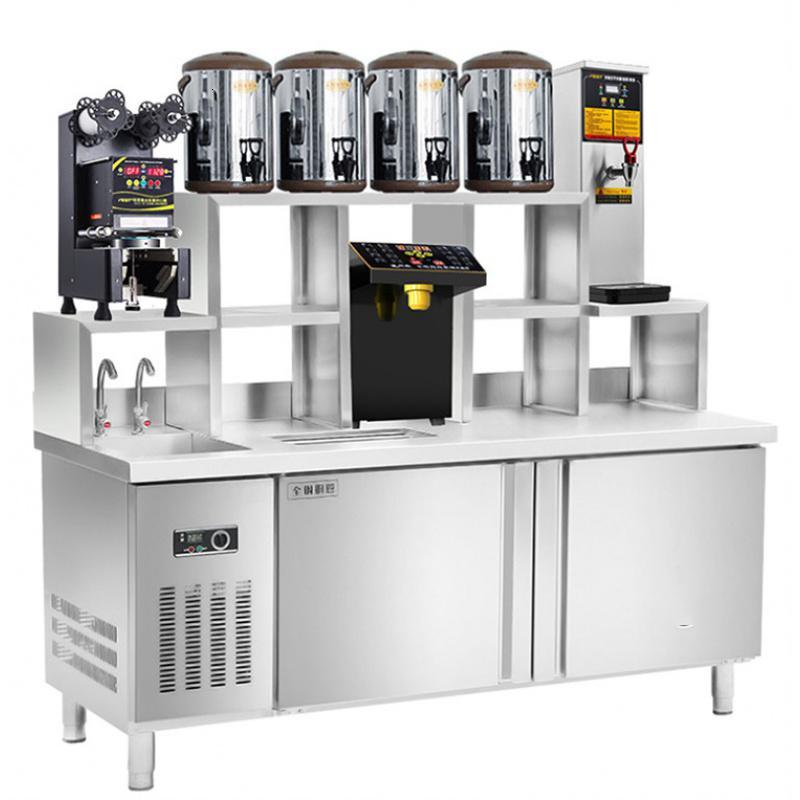
The global bubble tea industry’s rapid growth—projected to exceed $3.8 billion by 2030—has turned equipment supply chains into critical competitive battlegrounds. For manufacturers, ensuring reliable raw material sourcing, production agility, and timely global delivery is no longer optional; it’s essential to meeting surging demand. This article unpacks strategies to build resilient supply chains, mitigate risks, and empower businesses to scale operations seamlessly across borders.
—
Challenges in Bubble Tea Equipment Supply Chains
The complexity of manufacturing beverage equipment—spanning stainless steel components, IoT sensors, and energy systems—exposes suppliers to risks including:
– Geopolitical Disruptions: Trade tariffs, sanctions, or political instability impacting material imports.
– Logistical Delays: Port congestion, shipping backlogs, or regional fuel shortages delaying deliveries.
– Raw Material Volatility: Fluctuating prices for stainless steel or rare-earth metals used in high-tech components.
Proactive strategies are vital to maintaining competitiveness in this dynamic landscape.
—
Strategies for Supply Chain Resilience
1. Dual-Sourcing Critical Materials
– Partner with multiple suppliers for high-demand materials (e.g., 304 stainless steel) to avoid bottlenecks.
– Prioritize local suppliers for non-critical components to reduce lead times and transportation costs.
2. Regional Warehousing Networks
– Establish regional hubs in Asia, Europe, and North America to store semi-finished goods. This shortens delivery times and buffers against disruptions.
– Example: A factory in Guangzhou maintains buffer stock in Singapore and Hamburg to serve APAC and EMEA markets.
3. Vertical Integration
– Acquire or collaborate with specialty suppliers (e.g., CNC machining workshops) to control production timelines and quality.
4. Digital Supply Chain Twins
– Use AI-powered simulations to model disruptions (e.g., port closures) and reroute shipments in real time.
—
Sustainability in Sourcing and Production
Eco-conscious buyers demand transparency, pushing manufacturers to adopt greener practices:
– Circular Procurement: Source recycled metals or reclaimed plastics for non-structural components.
– Localized Manufacturing: Build factories near raw material hubs (e.g., stainless steel mills in India) to cut carbon footprints.
– Carbon Offsetting Programs: Partner with reforestation initiatives to neutralize emissions from long-haul shipping.
For instance, our factory’s “Green Freight” program uses biofuel-powered trucks for regional deliveries, reducing CO₂ emissions by 40%.
—
Agile Production Models for Global Demand
Customization and scalability are key to serving diverse markets:
– Modular Design Principles: Create base units that can be retrofitted with region-specific attachments (e.g., halal-certified milk systems for MENA markets).
– Pre-Assembled Kits: Ship partially assembled equipment to reduce shipping volume and circumvent import restrictions.
– On-Demand Manufacturing: Use 3D printing for bespoke parts, eliminating the need for large inventories.
—
Case Study: Navigating the Ukraine Conflict
A European bubble tea chain faced delays in stainless steel imports due to Russia’s 2022 invasion. Their Chinese supplier implemented:
1. Alternative Material Sourcing: Shifted to Vietnamese stainless steel mills with EU compliance certifications.
2. DHL Air Freight Partnerships: Prioritized critical component shipments via air to avoid land route blockades.
3. Localized Assembly: Partnered with a Polish facility to finish assembly, avoiding EU tariffs.
Result: Delivery timelines restored within 6 weeks, with no compromise on quality.
—
Future-Proofing with Blockchain and AI
Emerging technologies are revolutionizing supply chain transparency and efficiency:
– Blockchain Traceability: Log raw material origins (e.g., conflict-free minerals) on immutable ledgers to satisfy ESG audits.
– Predictive Analytics: Forecast demand spikes (e.g., holiday seasons) to align production with market needs.
– Smart Contracts: Automate payments to suppliers upon milestone completions, reducing financial risks.
—
Overcoming Trade Barriers
Manufacturers must navigate tariffs, certifications, and cultural nuances:
– Free Trade Agreements (FTAs): Leverage agreements like the USMCA or RCEP to reduce tariffs on components.
– Localized Compliance Teams: Hire experts to navigate EU’s CE marking or Middle East’s SASO standards.
– Cultural Customization: Adapt designs to local aesthetics (e.g., gold-accented machines for luxury markets in Dubai).
—
Conclusion
Resilient supply chains are the backbone of global bubble tea equipment manufacturing. By diversifying suppliers, embracing digital tools, and prioritizing sustainability, manufacturers can turn disruptions into opportunities for innovation and growth. For businesses aiming to dominate the global stage, investing in agile, transparent, and eco-conscious supply chains isn’t just strategic—it’s imperative.
Ready to scale fearlessly? Partner with a manufacturer that turns supply chain challenges into competitive advantages.
Article link:https://www.vlefooena.com/manufacturer/3709/

No reply content